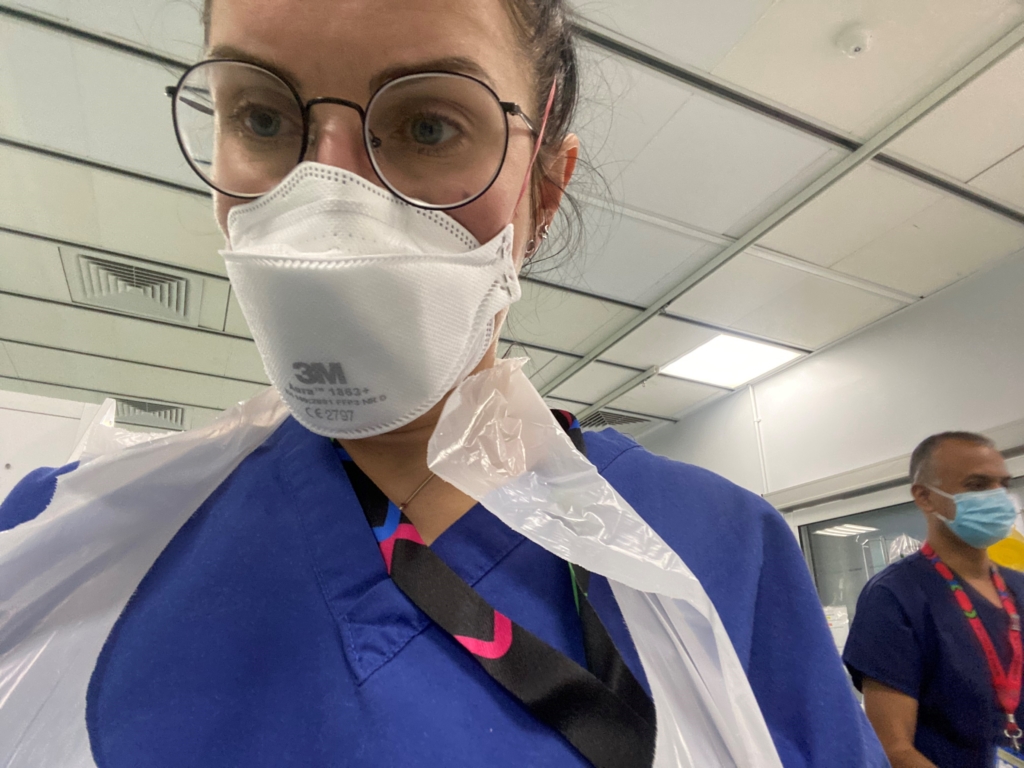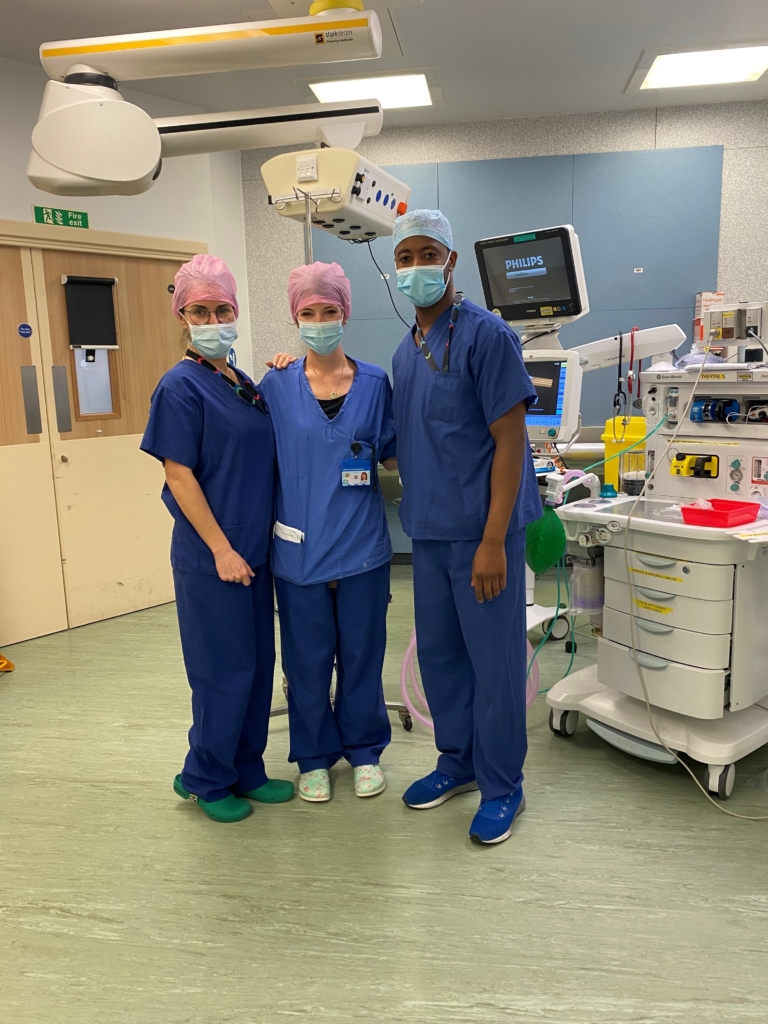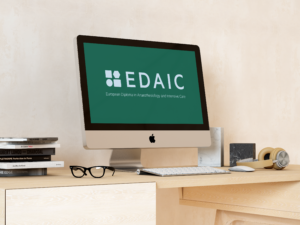Newsletter 2022
Newsletter March 2022: A TEP report from Ukraine (UK – United Kingdom)
Dr Inna Kuchynska
ikuchynska82@gmail.com
Department of Anaesthesiology and Intensive Care, Shupyk National Medical Academy of Postgraduate Education, Universal Clinic Oberig
Host Centre: West Middlesex University Hospital, London, UK
West Middlesex University Hospital is an acute NHS hospital in Isleworth, West London, operated by Chelsea and Westminster Hospital NHS Foundation Trust. It is a teaching hospital of Imperial College School of Medicine and a designated academic health science partner.
My observation in this hospital was one of the first and most wonderful things that I serendipitously experienced after leaving the COVID-19-travel-quarantine after arriving in London. I worked in the operating theatre, and was also teaching and able to walk around through beautiful London. It was a place, where I met people I am now honoured to call my friends. This phrase: “Keep calm and carry on” also nicely sums up my one-month stay in West Middlesex University Hospital as a participant of the ESAIC Trainee Exchange Program. I have since returned to Ukraine with other visions on different parts of my life, not only medicine.
I was very lucky to be one of the few TEP winners, who could still do the exchange programme in 2020. And although the COVID-19 pandemic certainly influenced my time in London, I am still very glad that I could travel there and experience and learn so much. Also, in spite of my wishing to spend a lot of time in hospital I also had a chance to visit different museums in London, this very wonderful city.

I applied for an exchange to London because I wanted to learn more about British medicine, intensive care, general anaesthesia, organisation of management in clinics, management of emergencies, and teaching processes for young doctors since West Middlesex University Hospital has its own trainee centre.
The structure and curriculum developed by my mentor doctor Dominika Dabrowska made sure that I really achieved that goal. The first half of my exchange was at the Department of Intensive Care. Dr Monika Popesku, head of the department, managed to create a very warm and friendly working atmosphere. It was such a pleasure to work in her team as everyone made me feel welcome. These included Dr Theodora Christodoulopoulou Dr Szilvia Szoke
I spent the second half of my exchange at the general anaesthesia department at West Middlesex University Hospital. After the weeks in ITU (Intensive Therapy Department), I was astonished by how different it is from Ukrainian general surgery. Seeing two different departments (ITU and Anesthesiology) and disciplines helped me to understand how the way to perform anaesthetic techniques (e.g. inserting a PICCO monitoring) is influenced not only by the specifics of ITU patients but also by the hospital and the individual anaesthesiologist. I am very grateful to have been honoured to work along and learn from highly-skilled, trained and experienced anaesthesiologists. A great thanks to Dr Dominika Dabrowska, my brilliant mentor and fantastic anesthesiologist, great teacher, and a wonderful colleague. Also great thanks to Dr Prior and Dr Florence. Regardless of the questions I asked, everyone always had an answer and a rationale for their decisions.
Additional to the work in patient care I also got the opportunity to take part in teaching. Every Wednesday at West Middlesex University Hospital young doctors have The Teaching Day. My mentor Dominika also made it possible that I could have held two seminars on anaesthesiology and conducted a test together with other young doctors. It was fascinating to learn and discuss the advantages and disadvantages of different teaching concepts with Dominika.
I can highly recommend London, especially West Middlesex University Hospital for the exchange programme. All personnel from the Hospital I met were very friendly and generous. I was privileged to learn so much about this fascinating country, its history and its people and to enjoy the well-known hospitality. London has a very good infrastructure, it is easy and safe to travel in this amazingly beautiful city filled to the brim with lovely cafes and museums. As nearly all doctors spoke English fluently, it is no problem to communicate in the hospital.
To sum up, TEP gave me the opportunity to get to know and explore a new field of anaesthesia, new anaesthetic concepts and techniques, other approaches towards anaesthesia and a different health care system. It helped me reflect, on what we do well in my home hospital and also where we could improve our care. Although we don’t have a cardiac surgery department in my home hospital, my stay in London taught me different ways to treat patients with different pathologies in ICU. I also changed my vision in the care system and began a process of change in my intensive care unit, taking into account the early detection of septic patients. Very important for me was the vision of treating patients with COVID-19 with mechanical ventilation in intensive care. Great thanks to everyone from the Hospital, who supported me all this fantastic time in London










